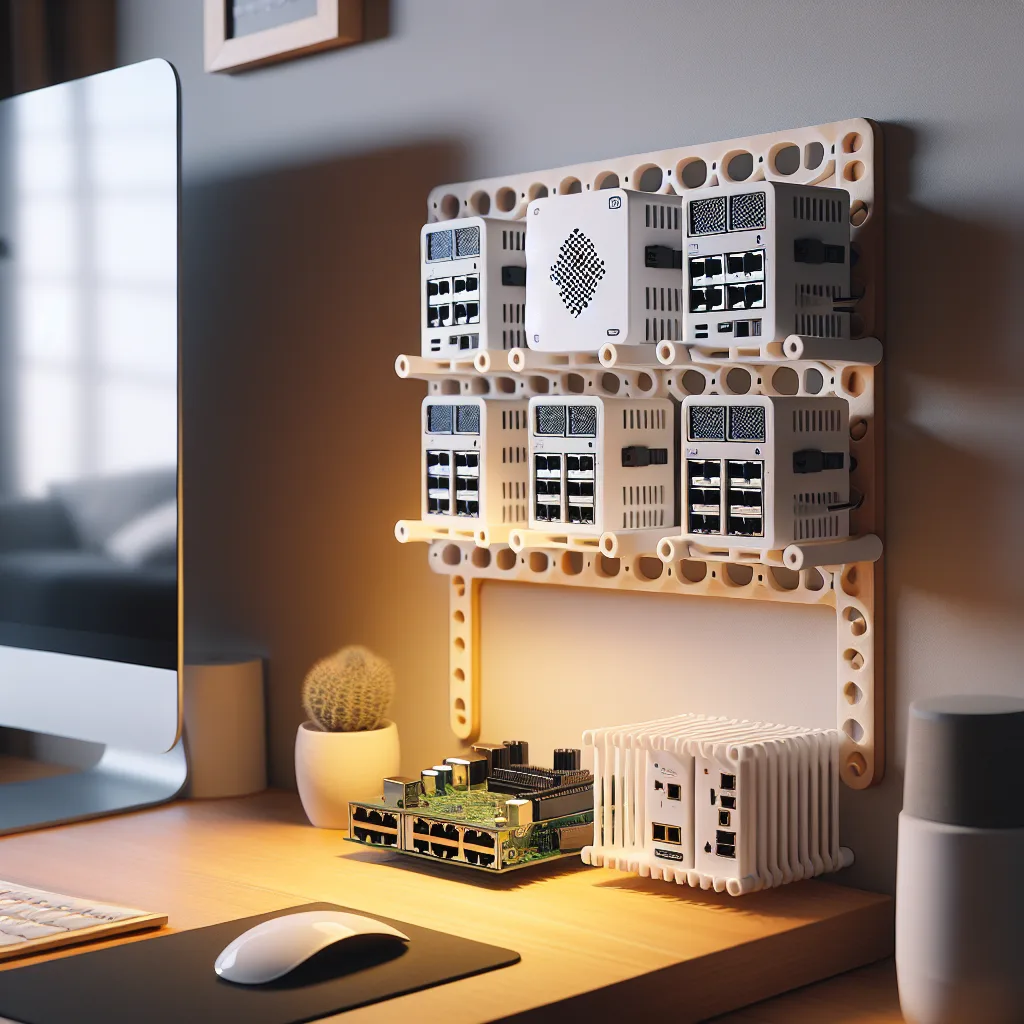Discover how a 3D printer can transform your tech space. A personal story about building a custom, organized homelab with 3D-printed parts.
My desk used to be what I’d call “organized chaos.” Piles of tech, tangled cables, and a general sense of things being almost in the right place. I had a little homelab setup—a few mini PCs, a network switch, and some hard drives. But none of it fit together nicely. The commercial stands and racks I found online were either too expensive, too big, or just… ugly.
So, I looked at the 3D printer sitting in the corner of my room and had an idea. What if I just made the exact parts I needed?
It wasn’t a grand, master plan at first. It started with a simple problem: I had three identical mini PCs for my server cluster, and they were just stacked on top of each other, getting warm and looking messy. I couldn’t find a simple, vertical rack for them anywhere.
So I opened up some design software (you can even find pre-made files on sites like Printables or Thingiverse) and designed a basic, slotted stand. A few hours later, I had a physical object in my hand. It was a simple, white plastic holder that cost maybe two dollars in filament to print.
And it fit. Perfectly.
That’s when I knew I was onto something.
From Digital File to Physical Part
The first successful print was a spark. Suddenly, I wasn’t just looking at my messy desk; I was seeing a collection of design challenges.
- The awkward network switch? I designed and printed a custom bracket that lets it hang neatly under my desk, completely out of sight but still accessible.
- The external hard drive that always vibrated? I printed a snug little case for it with vibration-dampening feet.
- Cable management? I stopped buying flimsy clips and printed my own. I made channels that screw into the underside of my desk, guiding every cable exactly where it needs to go.
Slowly, piece by piece, I replaced the chaos with custom-built order. My setup started to look less like a pile of electronics and more like a thought-out system. Each component had its own purpose-built home. The best part? The total cost for all these custom parts was probably less than one fancy monitor arm.
Why Print It Yourself?
Look, you can definitely buy solutions for all these problems. But building it yourself with a printer has a few benefits that you just can’t buy off the shelf.
- A Perfect Fit, Every Time. Your space and your gear are unique. With a 3D printer, you’re not limited to one-size-fits-all products. You can measure your device down to the millimeter and create a mount or stand that feels like it was made for it. Because it was.
- It’s Surprisingly Affordable. A roll of filament, which can last for dozens of projects like this, costs about $20-$25. The cost of printing a single bracket or mount is often less than a cup of coffee. Compare that to the specialized racks and stands sold online, and the savings add up fast.
-
It’s Incredibly Flexible. Technology changes. You get a new device, or you want to rearrange your setup. Instead of throwing out an old stand and buying a new one, you can just tweak your design and print an updated version. It’s a sustainable and adaptable way to manage your gear.
-
The Satisfaction is Real. There’s something deeply rewarding about solving a problem with something you created yourself. It connects you to your setup in a different way. It’s not just a collection of products you bought; it’s a system you built.
You Don’t Have to Be an Expert
Getting started with this is easier than you might think. You don’t need to be a mechanical engineer. The online 3D printing community is huge and incredibly generous. Thousands of free models for things like cable clips, mini PC mounts, and headphone stands are available for anyone to download and print.
If you have a 3D printer, or you’ve been thinking about getting one, I’d encourage you to look around your own workspace. Find one small thing that annoys you—a loose cable, a wobbly device—and see if you can find a printed solution for it.
It’s a fun, practical hobby that can bring a whole new level of custom organization to your space. My desk is no longer chaotic. It’s calm, it’s functional, and it’s uniquely mine.
